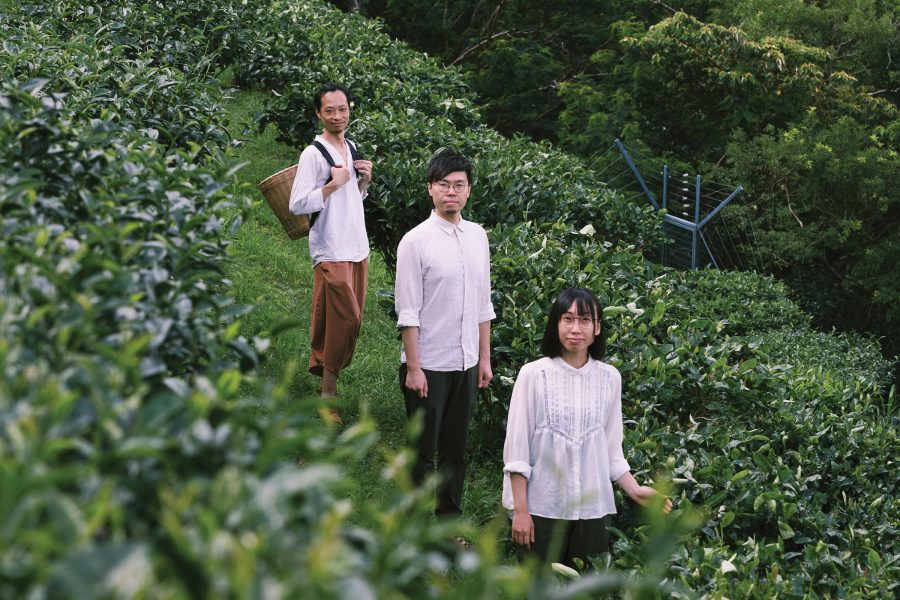On a clear summer’s morning in Hong Kong, we find ourselves wandering through terraced tea gardens. Rows of lush tea bushes cascade down the hillsides as wisps of mist drift between them – a scene more reminiscent of the Alishan mountains or Sri Lanka’s highland estates than this metropolis of skyscrapers. Yet at Kadoorie Farm and Botanic Garden, we find a calmer side to the city, 400 metres above sea level.
It’s here that we meet three young entrepreneurs who are reviving tea production in Hong Kong: Li In, known as “Lamlam”; Li Tin-on, or “Season”; and Chan Tsz-ting, or “Ting”. In their thirties and having been friends with each other for close to a decade, the trio founded the Hong Kong Tea Production Institute (HKTPI) in 2023. Each brings a distinct background to their shared goal: to create authentic, premium tea that is uniquely Hong Kong.
Season, a designer and tea master, began his journey 11 years ago after becoming fascinated by the meditative art of brewing. Ting, whose family has long been in the tea trade, discovered his passion while exploring both his own ancestry and Hong Kong’s heritage. Meanwhile, Lamlam, a former tea room curator, has spent 15 years studying tea across Japan, the UK and Sri Lanka, among other places, where she trained under award-winning farmers and master blenders.
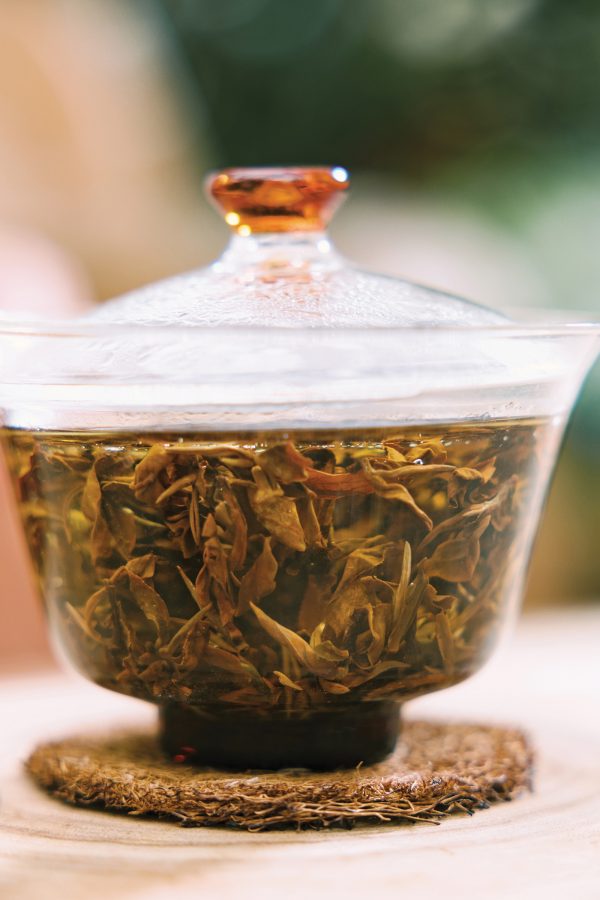
Credit: Elvis Chung
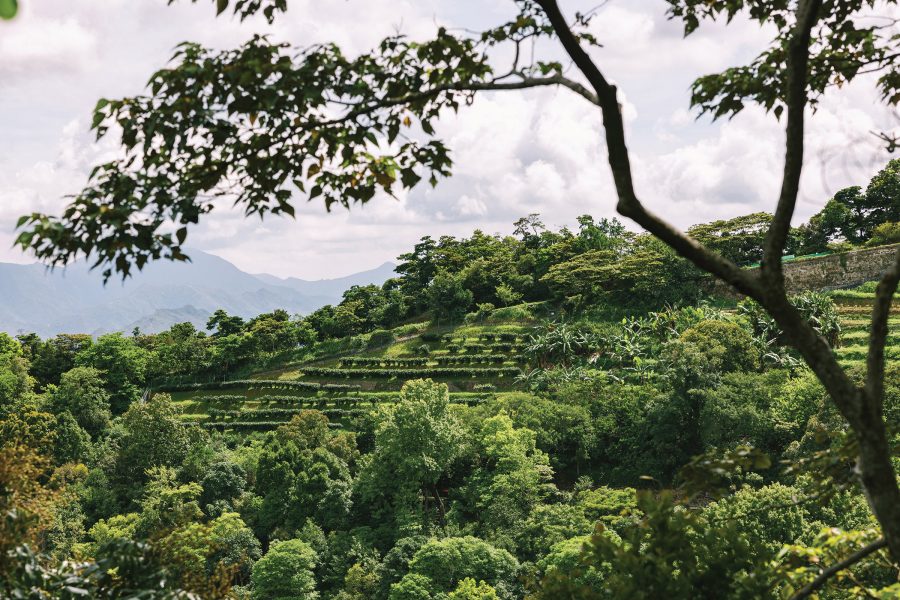
Credit: Elvis Chung
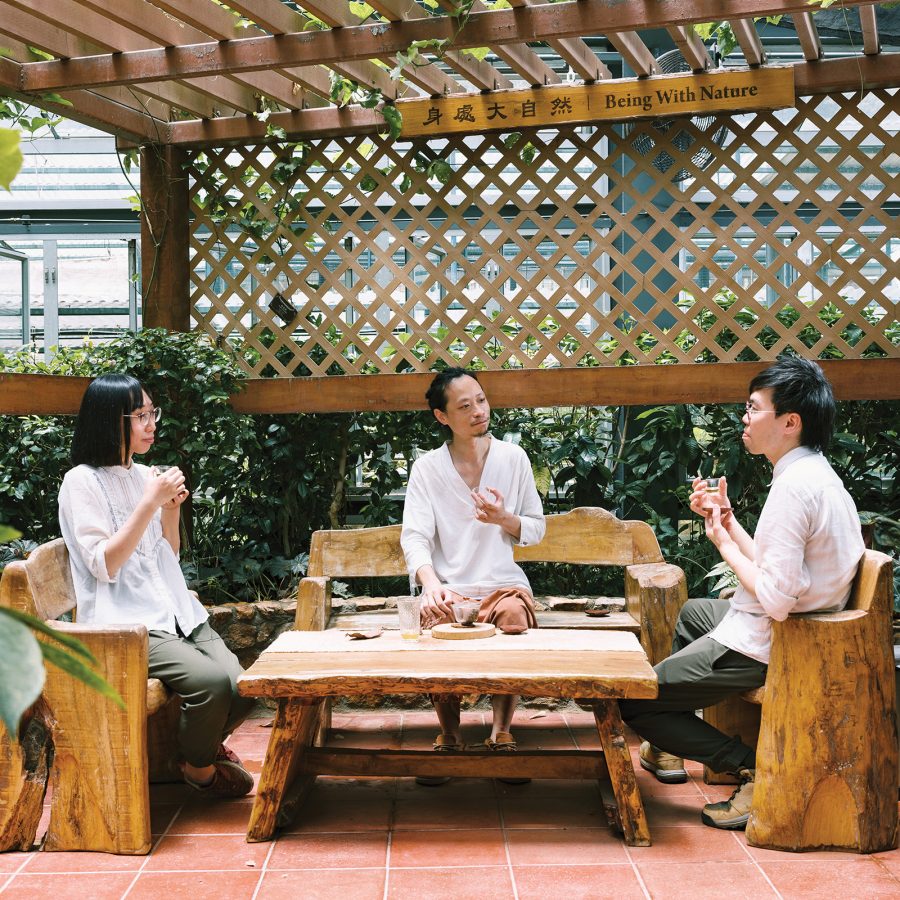
Credit: Elvis Chung
Pouring over the details
“What does Hong Kong tea taste like?” Ting poses the question that sparked their journey. “Any true tea lover would wonder the same.” Their experiments began at a tea farm in Ngong Ping on Lantau Island, before they partnered with Kadoorie, a nature conservation and education centre established in the 1950s, where they now produce small batches of handcrafted teas and host public workshops.
However, they’ve encountered unique challenges during their pursuit. “Hong Kong’s small-scale harvests mean we can’t use commercial tea factory machinery,” Lamlam says. “And with limited funding, we don’t yet have a dedicated workshop, so we often borrow corners of the farm or work from home.”
Due to limited quantities of fresh leaves, they’ve developed a guerrilla-style approach to artisanship: sun-withering leaves at various spots around the farm by day, and fermenting and processing them at home by night – sometimes even hand-tossing tea leaves on the MTR during the oxidation process.
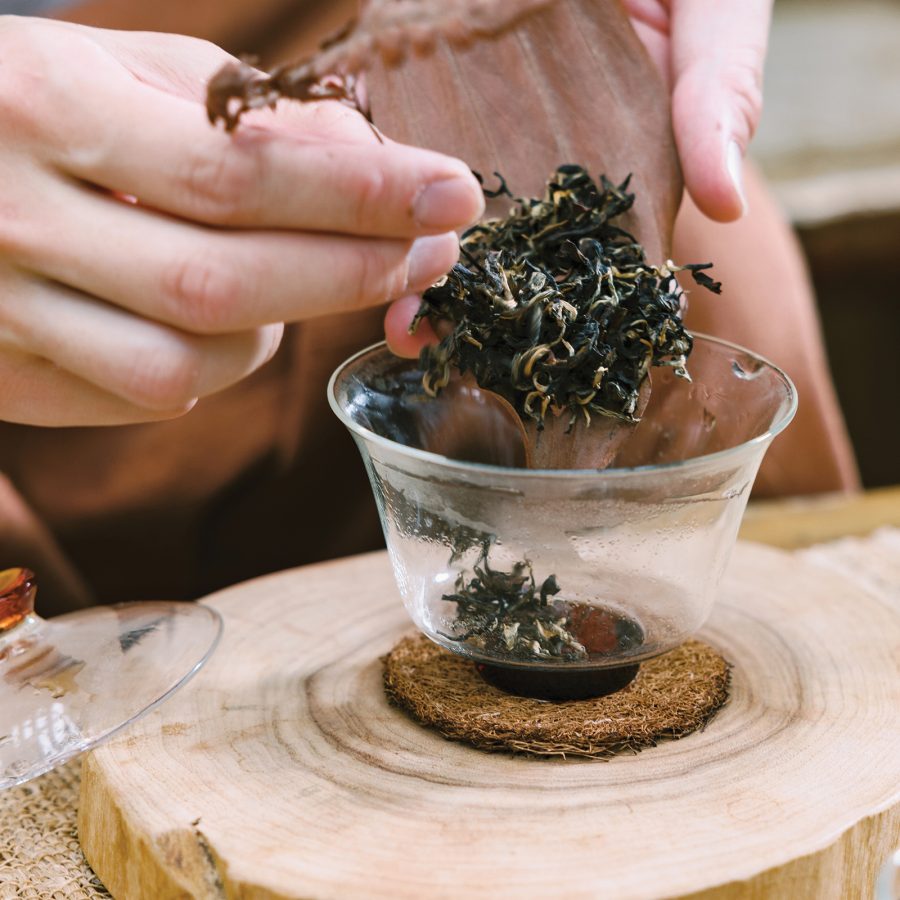
Credit: Elvis Chung

Credit: Elvis Chung
Steeped in heritage
Hong Kong’s terroir is ideal for tea, with frequent mist and cloud cover during spring and summer creating the high humidity levels that tea plants love. Tea production in the territory dates to as early as the Kangxi era of the Qing dynasty (17th century), when teas from Castle Peak (then Beidou Mountain) were documented to rival the finest imperial teas. Tai Mo Shan, Lantau Peak and other highlands once thrived with tea cultivation.
Kadoorie Farm began planting tea in 2004, importing cuttings from Fujian province for experimental plots on the northern slopes of Tai Mo Shan, Hong Kong’s tallest mountain. “The tea bushes were initially planted along terrace edges to prevent soil erosion and ensure safety for farmers,” says Andy Yung, sustainable agriculture officer at Kadoorie Farm and Botanic Garden.
Currently, Kadoorie cultivates three types of tea, including one Chinese tea known as Ming-fa, which Ting describes as particularly distinctive: “It has a pronounced fragrance with sharp, elegant floral notes. The finished tea shows prominent downy hairs and carries gardenia and citrus aromatics.” This cultivar thrives especially well in Hong Kong, exhibiting high yields and a unique character.
Lamlam notes: “Because it’s grown wild without irrigation, the fragrance is especially vivid; and since we don’t use pesticides, leafhoppers are attracted to the plants – their bites impart natural honeyed notes, giving the tea a similar flavour to other quality varieties from the region.”

Credit: Elvis Chung

Credit: Elvis Chung
Turning a new leaf
While tea-making in Hong Kong presents challenges, it also offers rare opportunities. “We’re not bound by tradition,” Ting says. “Although Hong Kong has a long tea history, the varieties recorded in historical texts no longer exist. And with no commercial pressures, we’re free to explore what Hong Kong premium tea should taste like today.”
Their efforts have yielded surprising reactions. Season recalls the Hong Kong International Tea Fair last August: “Many visitors were shocked to learn we had tea grown and made in Hong Kong. But after taking their first sip, they were amazed by the quality – some even said it was better than other teas at the fair. That contrast of disbelief and delight was unforgettable.”
According to ancient records, Hong Kong once produced local tea comparable to the region’s finest. Today, thanks to the passion and perseverance of a new generation of artisans, the city’s tea culture is being reborn – and may yet reclaim its place in cups worldwide.
The Story of Hong Kong Tea, a Chinese-language children’s picture book, was published by the HKTPI in January. To purchase a copy, email: info@hktpi.org .
The HKTPI hosts tea-making workshops – check Instagram for the next one.
More inspiration
Hong Kong travel information
- China – the Chinese Mainland, Hong Kong SAR, Macao SAR and Taiwan Region
- Hong Kong SAR - English
- Chinese Mainland (China) - English
- Taiwan, China - English
- 香港特別行政區 - 繁體中文
- 中国內地 - 简体中文
- 中國台灣 - 繁體中文
- Africa
- South Africa - English
- Asia
- Bangladesh - English
- Korea - English
- Singapore - English
- Cambodia - English
- 한국 - 한국어
- Sri Lanka - English
- India - English
- Malaysia - English
- Thailand - English
- Indonesia - English
- Maldives - English
- ประเทศไทย - ภาษาไทย
- Indonesia - Bahasa Indonesia
- Myanmar - English
- Vietnam - English
- Japan - English
- Nepal - English
- Việt Nam - tiếng Việt
- 日本 - 日本語
- Philippines - English
- Australasia
- Australia - English
- New Zealand - English
